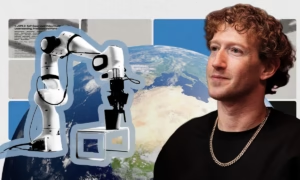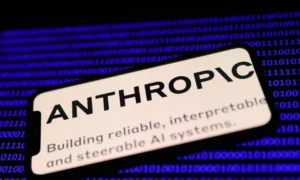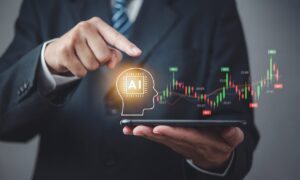The math problems that have tormented researchers for decades just met their match. Across laboratories worldwide, artificial intelligence is collapsing months of computational agony into mere minutes of processing time.
Here’s What Just Happened
Researchers who once waited months for computational results are now getting answers in minutes. The transformation sweeping through scientific computing centers on a fundamental shift in how complex calculations get solved.
This change is happening across laboratories worldwide. Machine learning models called equivariant graph neural networks are learning to mimic the fundamental laws of physics, chemistry, and materials science. Rather than grinding through calculations step by step, these systems recognize patterns from thousands of previous solutions and leap directly to answers.
The breakthrough moment came when researchers realized they could teach AI to respect physical constraints while dramatically accelerating computation. One density functional theory calculation that typically requires a month of supercomputer time now finishes in under ten minutes on standard hardware.
Over 60 scientists recently documented this shift in a comprehensive 500-page review. Their findings span disciplines: AlphaFold revolutionizing protein structure prediction, materials scientists screening battery components at unprecedented speed, and climate researchers cutting energy consumption by 40% without sacrificing precision.
The implications extend far beyond individual labs. Small research teams suddenly possess computational capabilities once reserved for well-funded institutions. A materials science group at a regional university can now compete with corporate research divisions that maintain massive server farms.
Neural solvers are particularly transforming climate science. Weather prediction models that once drained computational budgets now run efficiently on modest systems, potentially improving forecast accuracy while reducing costs.
The Bigger Picture
Scientific research is experiencing its most significant computational revolution since the advent of digital computers. The traditional hierarchy based on access to expensive hardware is crumbling.
Consider the parallels to digital photography’s disruption of film. Professional-grade capabilities once restricted to specialized facilities became accessible to anyone with basic equipment. Similarly, AI is democratizing advanced scientific computation.
This shift promises to accelerate discovery across multiple domains. Drug development timelines could shrink as pharmaceutical researchers rapidly model molecular interactions. Solar panel efficiency might improve faster as materials scientists quickly test new configurations. Climate models could become more comprehensive as researchers explore scenarios previously too expensive to simulate.
Yet challenges persist. High-quality training data remains scarce in many scientific fields. Ethical concerns grow around dual-use applications where the same AI accelerating beneficial research might enable harmful activities.
Quality control presents another hurdle. Traditional computational methods, while slow, offered researchers clear insight into their calculations. AI models sometimes function as black boxes, making it harder to verify results or understand why certain answers emerge.
Building the Infrastructure
Universities and research institutions are responding with new collaborative frameworks. Texas A&M’s RAISE Initiative exemplifies this approach, bringing together multidisciplinary teams to share datasets and computational resources. Industry partners contribute curated data and provide cloud-based access to sophisticated AI models.
These partnerships reflect a broader recognition that scientific AI development requires coordination across traditional boundaries. Academic researchers contribute domain expertise while technology companies provide computational infrastructure and machine learning capabilities.
Where Science Goes From Here
We’re witnessing the early stages of a fundamental reconfiguration in scientific methodology. As computational constraints disappear, research bottlenecks will shift from technical limitations to human creativity and experimental design.
The next phase may see AI systems not merely solving existing problems faster, but identifying entirely new questions worth investigating. When any researcher can access supercomputer-level analysis through standard equipment, the premium shifts to asking novel questions and designing innovative experiments.
This transition could reshape scientific careers. Graduate students might spend less time learning computational techniques and more time developing theoretical insights. Senior researchers could focus on big-picture thinking rather than managing computational logistics.
The ultimate test will be whether faster computation translates into better science. Speed alone doesn’t guarantee insight, and the scientific community will need to ensure that accelerated research maintains the rigor and reproducibility that define good science.
What happens when every laboratory bench includes AI-powered computational tools as standard equipment? The answer may define the next generation of scientific discovery.























